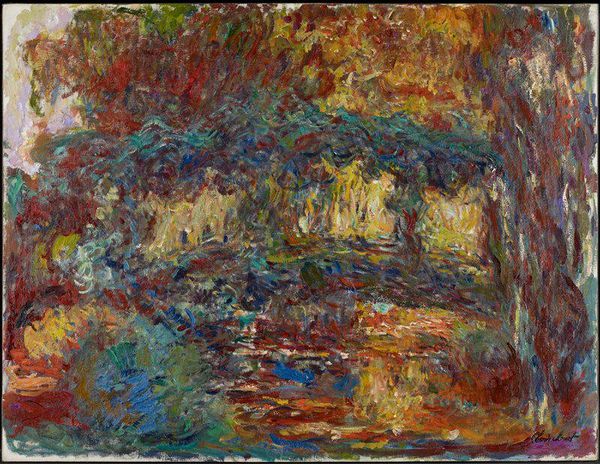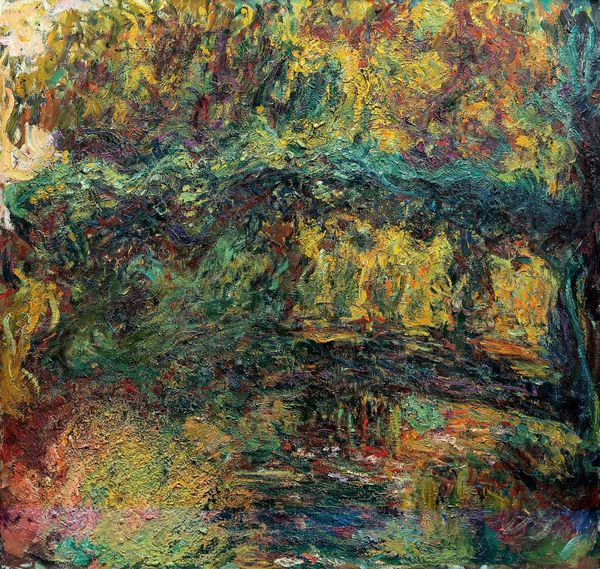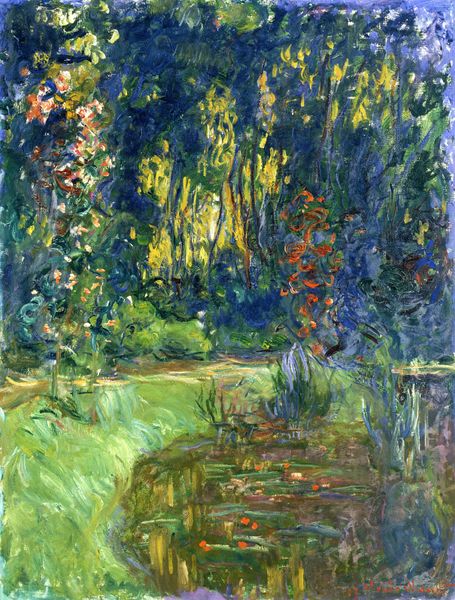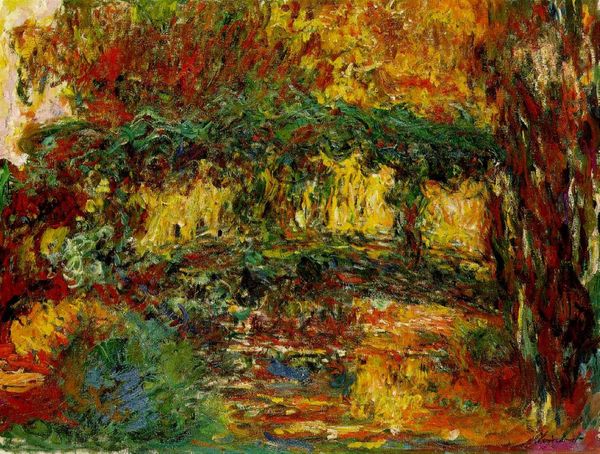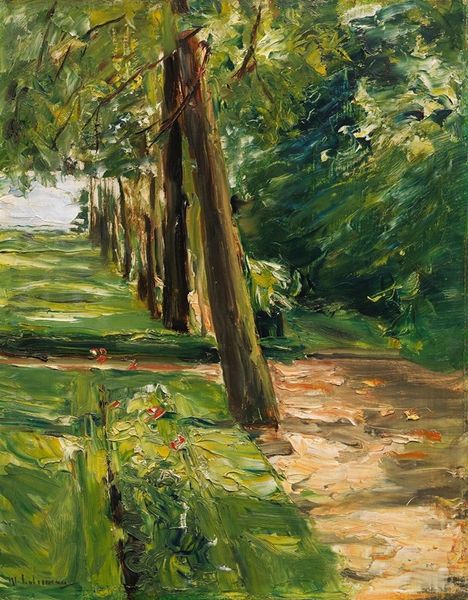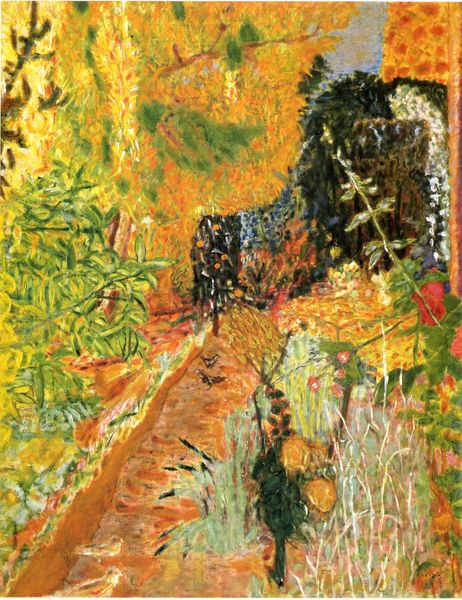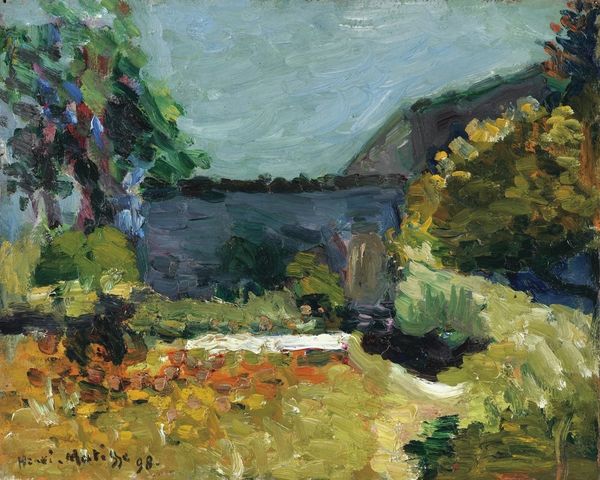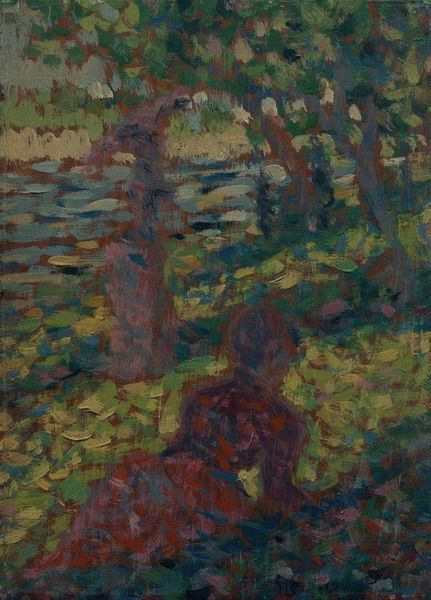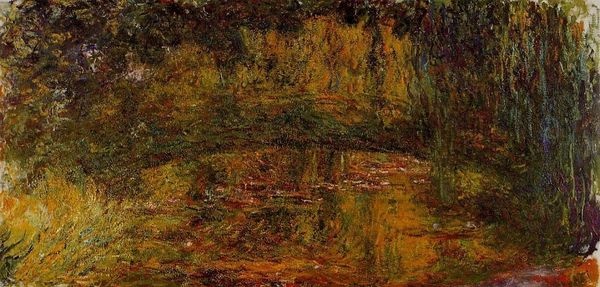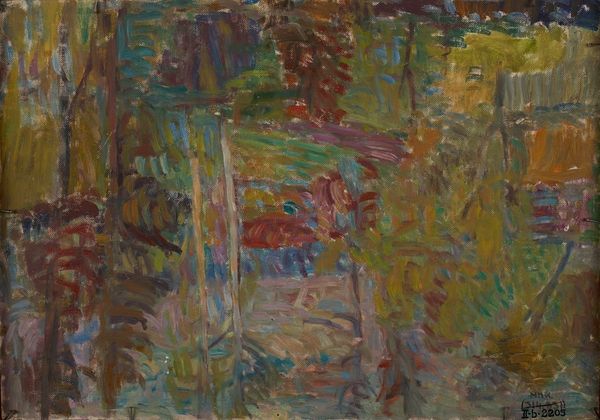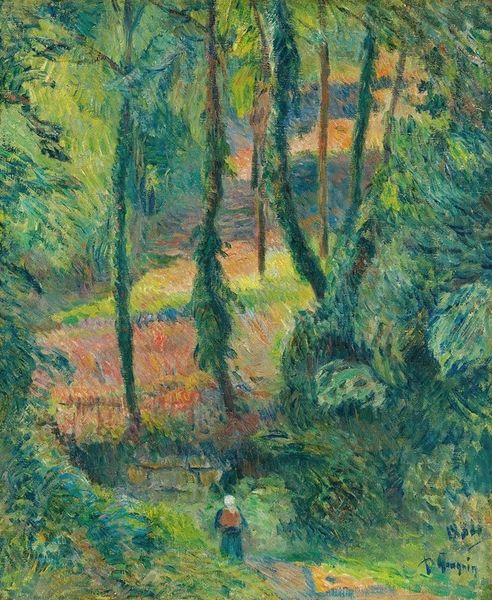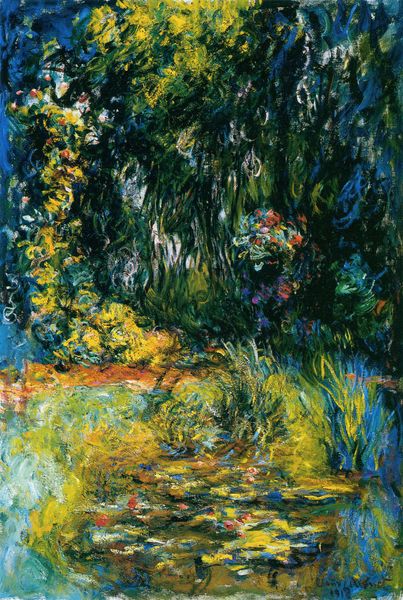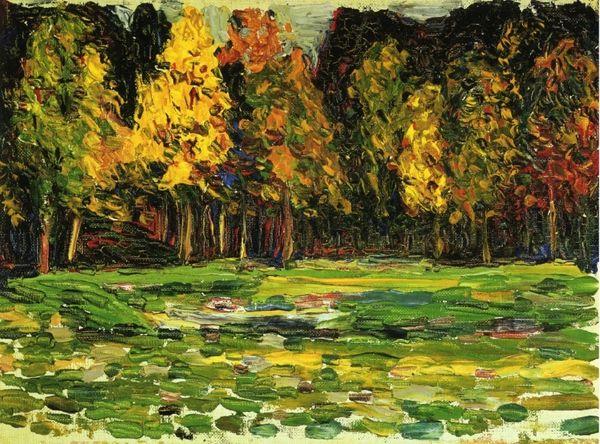
Copyright: Public domain
Curator: We're standing before Wassily Kandinsky's "Study for Sluice," created in 1901. An oil painting that pulses with pre-abstraction exploration. Editor: The moment I saw this, it felt like peering into someone's memory, blurred and intensely vibrant at the same time. There’s a raw, dreamlike quality. Curator: Indeed. This piece exemplifies a bridge between Kandinsky's early landscape work and his later move toward abstraction. Notice the deliberate brushstrokes—gestural yet carefully placed, the colour palette—a fascinating blend of Fauvist vibrancy, particularly in the yellows and oranges, with nascent Expressionist intensity. Editor: Right. That orange path feels like it's burning a trail into the darker, almost brooding tones of the lake. I can practically smell the damp earth and the turning leaves, even though it's more suggested than detailed. Does anyone else find it evokes an almost tangible atmosphere? The water feels dark and mysterious. Curator: Precisely! It's a perfect example of Kandinsky’s push-pull between representation and emotional resonance, playing with the interplay of light and shadow, mass and void. Consider the form of the trees in the background as well – almost dissolving into pure color. It's fascinating to consider that Kandinsky eventually completely dismissed the need for recognisable forms. Editor: And yet, even with this dissolving effect, it still evokes such a visceral response, like a place half-remembered from a childhood dream, doesn't it? I want to go for a walk along that path. The colors speak to a sensory memory of warmth mixing with cold water. Curator: The formal construction allows for an experiential encounter beyond the immediate visual, which makes it so remarkable. By manipulating the established language of landscape, Kandinsky encourages viewers to contemplate their personal relationship with the artwork. Editor: Yes, it really speaks to me, prompting contemplation, memories... even though it's small, the painting holds within its layers not just paint, but potential for an emotive recall that echoes through time. A fantastic journey in sensory memory.
Comments
No comments
Be the first to comment and join the conversation on the ultimate creative platform.
